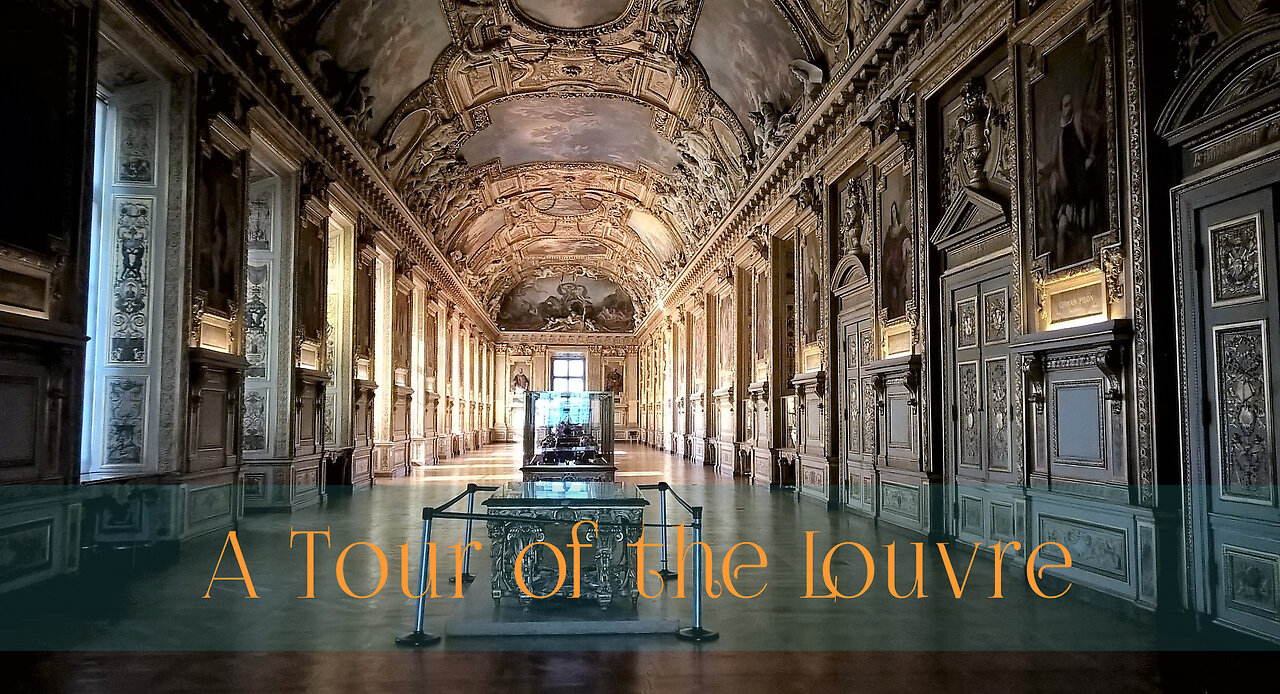Premium Only Content

A Tour of the Louvre (Arte 2021-MULTISUB)
A 2021 Arts Documentary directed by Frédéric Wilner, about the tumultuous history of the Parisian museum and its fabulous collections. Audio in French with subtitles in; English, Italian, Spanish, German and French (click on CC for the subtitles).
In the beginning was the Mona Lisa: the star of the Louvre joined the royal collections under Francis I, five centuries ago, with two other masterpieces by Leonardo da Vinci, the Saint John the Baptist and the Saint Anne. Expanded over the centuries, in particular by Louis XIV, who made it an instrument to serve his influence, the royal collections were nationalized by the revolutionaries and presented to the Central Museum of Arts, inaugurated in 1793 in the Louvre Palace.
While the tombs of the kings were dismantled, and many pieces of the treasure of the Saint-Denis basilica were melted down to finance the revolutionary wars, the sword of Charlemagne, which had escaped from the Terror, found refuge in the new museum, as did the medieval statues of Charles V and Joan of Bourbon, albeit stripped of their royal attributes. From Veronese's Wedding at Cana to the ancient marbles of the Vatican, including the Saint Francis of Assisi receiving the stigmata by the primitive Giotto, the territorial conquests of the Republic and then the Empire gave rise to the seizure of countless foreign masterpieces. Which, under the supervision of Dominique Vivant Denon, fed the institution renamed the Musée Napoléon.
After the latter's fall, the Borghese collection (with his Gladiator Borghese), which the deposed emperor had bought from his sister Pauline's husband, filled the void left by the thousands of works that had been returned to their countries of origin. At the same time, Count Forbin repopulated the galleries by acquiring the works of living artists (such as Delacroix and his Liberty Leading the People), exhibited at the Palais du Luxembourg, the world's leading museum of contemporary art, before entering the Louvre after their deaths. In a context of competition between major European museums, Paris is also following in the footsteps of ancient civilisations, Greek, Egyptian and Assyrian, and is bringing back, among others, the iconic Venus de Milo, the colossal Sphinx of Tanis and the magnificent "bulls of Khorsabad".
How did the Louvre become the largest and most visited universal museum in the world? With the help of specialists - historians, curators, but also Jean-Luc Martinez, Laurence des Cars' predecessor at the head of the establishment -, Frédéric Wilner reviews the successive stages of the constitution of its dazzling collections, looking at the fascinating trajectory of mythical, founding works, which tell in filigree the history of France and that of Europe.
-
 49:28
49:28
Adaneth - Arts & Literature
1 month ago1000 Years of Karakami Art
832 -
 3:11:18
3:11:18
Badlands Media
1 day agoThe Narrative Ep. 18: Leaders of the Golden Age
106K29 -
 28:03
28:03
Adam Carolla
12 hours ago $10.82 earnedFraud, Corruption & Minecraft Mayhem - Gen Z's new Cult Classic | The Adam Carolla Show | #news
64.9K23 -
 2:37:08
2:37:08
TheSaltyCracker
10 hours agoTrump is The People's Champ ReeEEeE Stream 04-13-25
173K212 -
 4:24:35
4:24:35
Due Dissidence
19 hours agoDave Smith and Douglas Murray THROW DOWN, Judge OK's Khalil Removal, Maher Dishes on Trump Summit
53.2K55 -
 2:33:02
2:33:02
Nerdrotic
13 hours ago $22.86 earnedMysteries of Mars with Mike Bara | Forbidden Frontier 098
92.3K30 -
 3:05:07
3:05:07
IsaiahLCarter
9 hours agoApostate Radio #009: Standing Up with Eric Abbenante
42.8K2 -
 11:53
11:53
Forrest Galante
8 hours agoIs This Giant Extinct Sea Cow Still Alive?
48.9K13 -
 1:14:47
1:14:47
Josh Pate's College Football Show
11 hours ago $7.30 earnedTennessee & Nico Disaster | Portal Chaos Ahead | Biggest “What-Ifs” | Truth About Big Noon Kickoff
62K6 -
 2:14:43
2:14:43
Tundra Tactical
11 hours ago $8.01 earned$3200 ZEV HEARTBREAKER Contest!!! TONIGHT On The Worlds Okayest Gun Live Stream
64.1K2